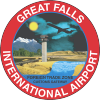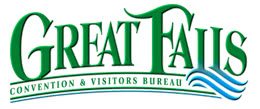Our History
The History of A Lazy H
Indian Cave Drawings

A Lazy H Outfitters utilizes trailheads and facilities along the Rocky Mountain Front from Glacier Park in the north to the Dearborn River in the south. Before us, hunting, fishing, and exploring has long been a cornerstone of inhabitants of this area. Since the last ice age this area has been prime hunting grounds for American Indians and their ancestors. Because settlement took place so late here (ie 1860+) and people densities have always been low, there remains quite a bit of evidence of American Indian and pre-historical activity. Cave pictographs can be readily found in area caves, buffalo jumps, or pishkins, are common as are the centuries worth of boneyards at their base. Teepee rings are very common most anywhere along the Rocky Mountain Front, as are other artistic features who's meaning has been lost to us. Early settlers and trappers used Indian trails to first explore the mountains. When the first trappers from the Hudson Bay Fur company first appeared in the18th century they found the rivers and streams full of valuable beaver pelts and other fur bearing animals. They left their indelible mark culturally and geographically. They often married Indian women and old families in the area have common French surnames. More obvious, the trappers put the first European names to mountains and rivers in their native French Canadian language.
The transition zone from mountains to foothills provide additional rain in the spring and summer, and the foothills captured additional snowpack in the winter. In winter, the proximity to the mountains generated persistent winds which blew the snow free in many places, giving access for winter forage. The Chinook winds, or "snow eating" warm winter winds melted snow and warmed temperatures giving respite from the bitter cold in the deepest days of winter. This cycle and the importance of this area to native game species is as important today as it has been for tens of thousands of years.
All manner of native game (elk, mule deer, big horn sheep, grizzly bears, and bison to name a few) frequented this area as prime wintering grounds as well as in the summer for lush grass which lasted longer than the drier plains. As a result, the Front was an eternal battle ground for the various Indian tribes vying to control these precious predictable hunting grounds. The Blackfeet Indians had a strong presence, and were vigilant about warding of intruders from the Cheyenne Indians from the south and Sioux Indians from the east. However, the most troublesome for the Blackfeet were the Flathead, Nez Perce and other Indian tribes from the western mountain valleys that would cross the various mountain passes on the Continental Divide and come to the Front to hunt. They would hunt, harvest, and process their kills during the summer then head back into the mountains in the early fall before the snow closed the passes. Ocassionally, they'd steal a couple of unsuspecting horses as well.
Rocky Mountain Front west of Dupuyer
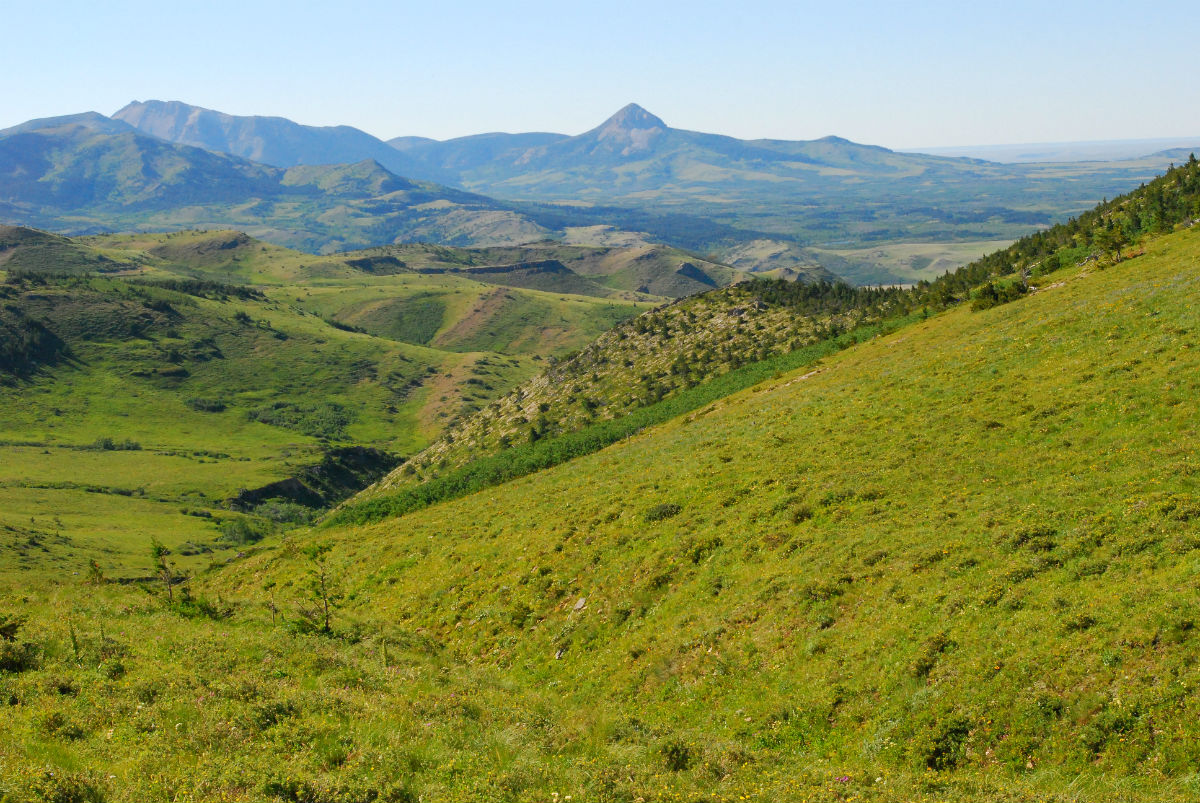
East Fork Strawberry Elk 1936

One of these passes, Gateway Pass, is among the lowest on the Contintental Divide, and was the site of many fierce battles between the Blackfeet and the Flathead. The mountain names in the immediate area, such as Bloody Hill, attest to the outcome of the clashes between these tribes. We cross Gateway Pass from the east as we ride into the Big River Meadows area and our early season hunting camp just below the meadows. The Big River Meadows area has for at least several hundred years been strategic to travelers, hunters, explorers, and early settlers. Indians used this pass extensively as it is very low and easily navigated. Also, there are natural campsites along this route from west-east which afforded good grazing for their stock. The first explorers from the east arrived in the form of fir trappers, often from the Hudson Bay Company in Canada. Hidden away nearby are lean-to shacks and trapper cabins used by trappers in the early 1800's as they moved about the country checking their traplines. Later, the early cattle ranchers ran summer cattle in the lush mountain valleys.
Big River Meadows Hunting Party 1938

Sabido Cabin (former Lineshack) near Gateway Camp
They often hired cowboys to check on the cattle and keep them in the mountains. There is a remnant of a "lineshack" cabin in nearby Big River Meadows, which was used 1900-1930 for a place for the range riders to stay as the gathered cattle in the mountains before moving them down the prairie in the fall. The lineshack was abandoned and another rebuilt near our camp around 1930, and was used until the grazing leases were abandoned around 1960. The cabin is still there and is used as an administrative site by the US Forest Service for overnight stops for their trail crews. The old drift fences have largely been removed now from the country, but the trails the cowboys used to get up high to spot for cattle have been repurposed as meat trails and access trails to hidden hunting areas. Every now and then when we're off the beaten path exploring or hunting, we come across the random artifact of these bygone days. Sometimes it's a fence remnant, or a rotted cabin footprint, pigment drawings on a rock recess, or the random arrowhead or rock hammer lying in the dirt. All these are direct links to our predecessors and fascinting in their own right.
While there were few homestead attempts in the late 1890's, and fewer successes, there are some places where we explore the old homesteaders. These were tough, but often misguided, individuals who attempted to "lay claim" to 160 acres for agricultural purposes. They mostly failed in their attempts to "prove up" on their claims and get title to the property. The growing seasons are very short, and the winters are absolutely brutal. Temperatures drop to 40 and 50F below zero, and the snow can be 15 feet or more in many places. Often their cabins were literally buried in snow and they'd have to dig down to get to them. There is a homestead attempt at Gates Park, where a couple of original buildings still stand. This is now the Gates Park Rangers station used by the Forest Service for trail maintenance crews and rangers. The cabins are about 1/2 mile from our Gates Park camp on the Sun River. Other homestead attempts are at Danaher Meadows on Danaher Creek, as well as at Murphy Flats at the junction of White River and the South Fork Flathead River.
Gates Park Ranger Station homestead barn near Gates Park Camp
Another historically significant area is Marias Pass on the southern border of Glacier Park. This is the lowest pass in the northern Rockies with the most gradual grade crossing the Divide, making it ideal for the early transcontinental railroads. Thousands of year before it was settled though, it was fiercely guarded by the Blackfeet against the same western tribes, the Flatheads and the Nez Perce. Heavily logged in and prone to immense snowfall in the winter, the Blackfeet kept this area well defended and was only a rumor until it was discovered in1889. The magnitude of the discovery for the railroads was profound and quickly the Great Northern Railroad surveyed a route within a year. Even then, the Blackfeet were a menace to the early surveyors until the smallpox outbreaks weakened their numbers and resolve. The area south of Glacier Park is still held as religously significant to the Blackfeet and our Two Medicine River hunting camp is in the heart of this area and is the only permitted camp in the Two Medicine valley.
Glacier Park and Marias Pass
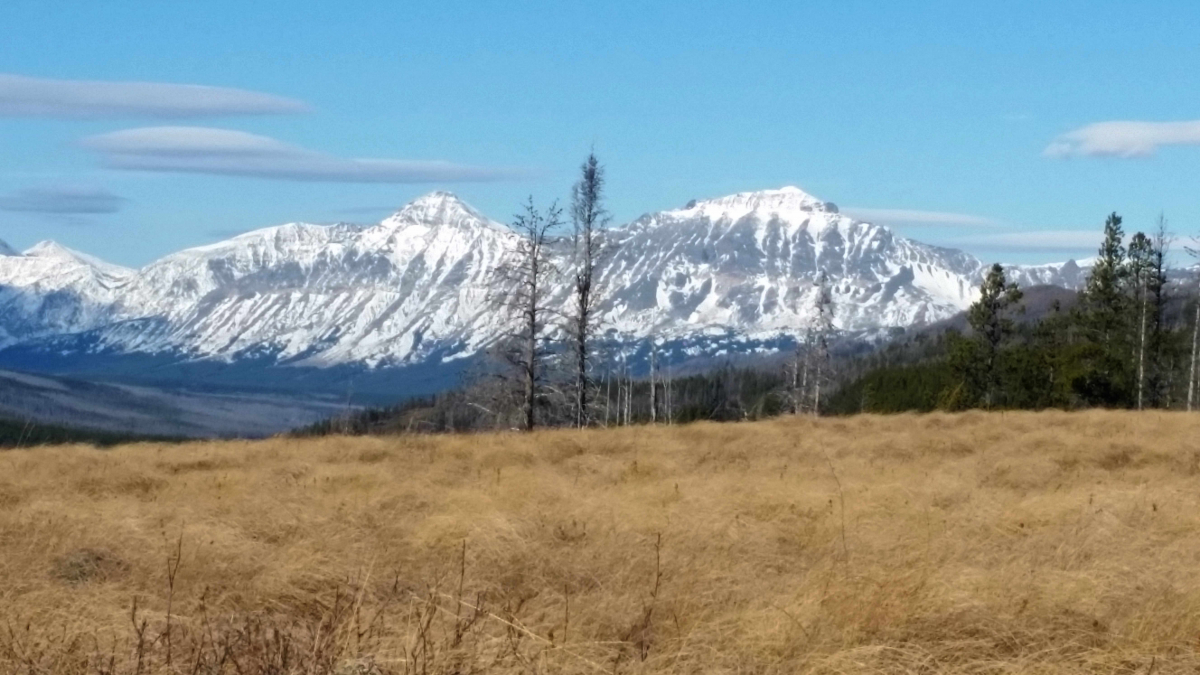
Packstring Descending Badger Pass 1930
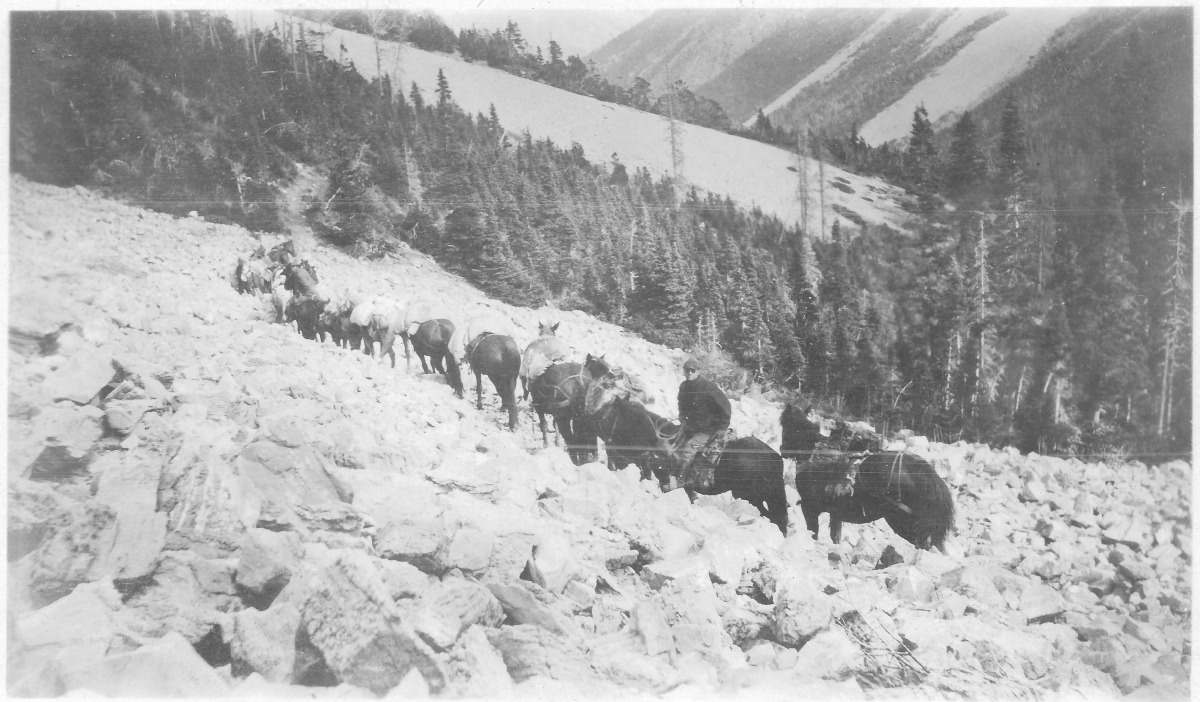
Our outfitting operation took roots just before World War I broke out in Europe, when Jesse Gleason established a hunting lodge on the South Fork of the Teton River at the foothills of the Front. Jesse took hunts and a few fishing trips in the area, but his passion was painting and he used the hunting lodge mainly as a place to get away and do what he loved. Jesse relinquished his homestead claim to his nephew, Kenny Gleason, around 1928. Kenny and his wife turned the hunting lodge into a dude ranch and started taking longer and more consistent trips into the mountain valleys to the west, in what was then the Sun River Primitive area. He established a hunting and fishing camp at Gates Park, on the North Fork of the Sun River, as well as another camp in White River west of the Continental Divide. For over 50 years Kenny took hunters, fishermen, and adventurers through the Sun River Primitive area, now the Bob Marshall Wilderness. Among his earliest guests were his uncle, Jesse Gleason, and Jesse's long time painting friend and famous western artist Charlie Russell. Jessie and Charlie did a number of paintings on early western hunts from the Gates Park camp and Sun River area.
Strawberry Creek Hunting Party 1936
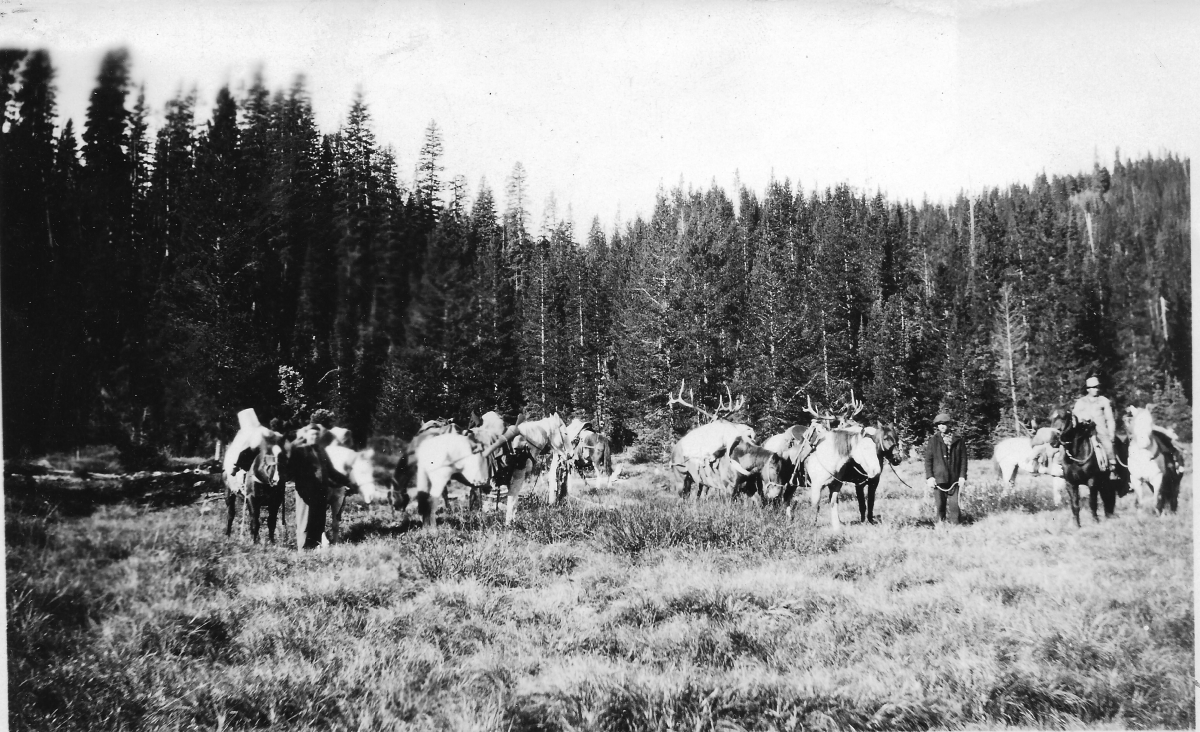
In 1979 Kenny sold his outfitting business to Allen Haas. At the time the Gleasons established the Gates Park camp is pre-dated the designation of the Sun River game preserve. As such, when the camp ownership changed the Haas', in cooperation with the US Forest Service, discontinued hunting from the Gates Park camp and established the Two Medicine River camp. The Gates Park camp is still used on our fishing and traveling summer horse pack trips. The Two Medicine River camp is our general season hunting camp.
In 1994 we purchased Strawberry Creek outfitters and started taking early season hunting trips into the Gateway Creek and Strawberry Creek areas, via Swift Dam. In 2013 we purchased the Steven Johnson estate at the base of Swift Dam for our permanent and privately owned trailhead used for our northern summer trips and the early season hunting.
In 2017 Joe and Lisa Haas assumed operational management of the business and have been operating in continuously since.
Guests Crossing Badger Pass 1941

Alice and Kenny Gleason
Allen Haas
Joe Haas & Cottonwood

Joe Haas early season hunt at Trail Creek Gorge
About
Circle 8 Outfitters (formerly A Lazy H Outfitters) is a family business operated by Joseph and Lis Haas. We have been taking guests and friends into the mountains for 100 years. We are passionate about providing you an extraordinary adventure into what we think is the coolest wild country in the lower 48 states.
GET IN TOUCH
- P.O. Box 167
Choteau, MT 59422 - Phone: (800) 893-1155
- Email: [email protected]

